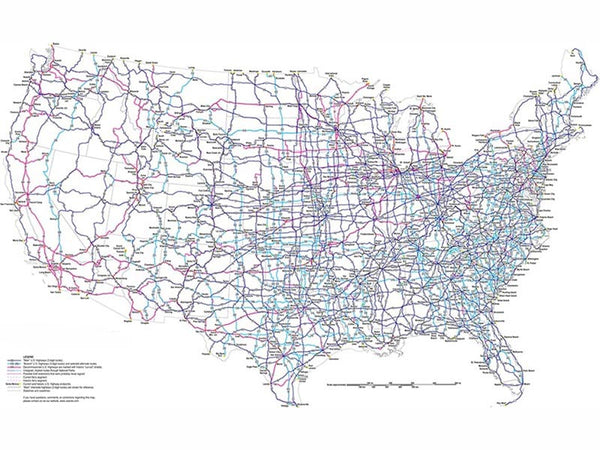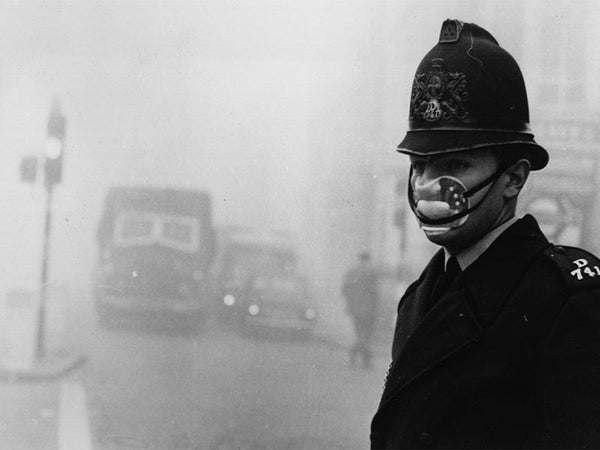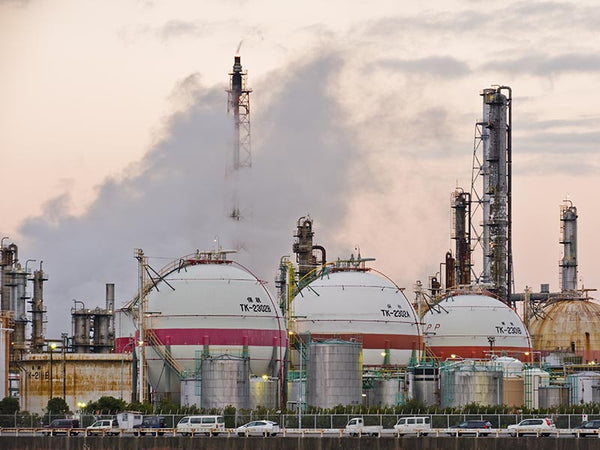In the 1940s and 1950s, due to mass production and increasingly popular prices, people's favor for automobiles increased day by day, followed by increasing gasoline consumption. In order to meet the huge market demand, various countries have begun to build oil refineries on a large scale. Speeding cars in cities and countryside, giant oil refineries, well-connected oil pipelines and dotted gas stations, these not only provide the public with cheap energy, but also bring convenience when traveling, but also lead to a harsh environment. pollution problem. Traditional internal combustion engine vehicles will generate a large amount of harmful exhaust gas during use, and the emitted nitrogen oxides, hydrocarbons, carbon monoxide and carbon particles have become the main sources of air pollution. Gasoline vehicles consume a lot of oil resources and also seriously pollute the natural environment on which human beings live. The various environmental pollution incidents and oil crisis that occurred during this period gave people a head start. More and more enterprises and social organizations realized the importance of saving oil resources and reducing environmental pollution, and began to turn their attention to electric vehicles.
At the end of the 19th century, American industrial production began to take the lead in the world, and the development of steel, petroleum and chemical industries created favorable conditions for the automobile industry. The advent of the Ford Model T in 1908 promoted the popularization of automobiles, and automobiles became a part of American life. The United States has the world's largest road network and highway system, and is known as a "nation on wheels", which is not unrelated to its social natural environment, culture and values.
The United States is vast and sparsely populated, with a well-developed highway system and auto industry, and many people like to live in quiet suburbs. At that time, the price of gasoline was relatively cheap, and people didn't have to worry about the cost of using gasoline cars at all, and they happily drove the car on the long road between office and home. In the 1920s, the average monthly income in the United States was $103, and the price of a gallon of gasoline was only ten cents! Cars have become an inseparable part of American life.
The car is not just a simple means of transportation for Americans, it embodies American popular culture and values, and is an important part of the American dream. In the United States, people have an almost crazy love for cars, and the high speed, high horsepower, personal space and high mobility of cars are all in line with the spirit and desire of Americans. Cars are as common in America as bicycles are in China.

Pictured: America's dense road network
Cars satisfy people's pursuit of freedom of movement and experience the pleasure brought by speed. But the car is also a mobile pollution source, which emits a large amount of pollutants harmful to the human body, such as hydrocarbons, carbon monoxide and nitrogen oxides. People rejoice and enjoy everything that the car brings, never thinking about the consequences of the energy consumed and the gas emitted by the car, and disaster is coming quietly.
Los Angeles is a coastal city located in the southwest of the United States, with sunny and warm climate, known as the "City of Angels". The development of gold mines, oil and canals in the early days, coupled with its unique geographical location, made it quickly become a port city with developed commerce and tourism. However, since the early 1940s, the "angel" has lost its gentleness, and the city has become ferocious as the devil. From summer to early autumn, once the weather is clear, smog will appear over the city, covering the entire city with claws and claws. The smoke causes red eyes, sore throat, breathlessness, dizziness, and headaches. After 1943, the smog became even more rampant, and even stretched its claws to the mountains 100 kilometers away from the city. Large pine forests withered and citrus production decreased. In 1955, more than 400 elderly people died of respiratory failure. In 1970, about three-quarters of citizens suffered from pink eye disease, which is the famous photochemical smog pollution incident in Los Angeles, which is also the earliest new type of air pollution incident.
Photochemical smog is caused by the emission of automobile exhaust and industrial exhaust gas. After the olefinic carbon ammonia compounds and nitrogen dioxide in automobile exhaust are discharged into the atmosphere, the original chemical chain is destroyed under strong sunlight and ultraviolet radiation. Forms highly toxic photochemical smog.

Pictured: The City of Angels is shrouded in smoke
Los Angeles had 2.5 million cars in the 1940s, with 170,000 cars passing through each highway every day, consuming about 1,100 tons of gasoline every day, and emitting huge amounts of hydrocarbons, nitrogen oxides and carbon monoxide. These car exhausts are continuously discharged into the sky above sunny Los Angeles, and the whole Los Angeles has been turned into a toxic smog factory.
In the mid-19th century, Britain took the lead in completing the Industrial Revolution. The development of science and technology not only drove economic development, but also brought about environmental pollution incidents similar to the United States. The city of London is located in the Thames River Valley. Since December 5, 1952, the temperature inversion layer has enveloped London, and the sky above the city is in the center of high pressure. Both vertical and horizontal air flow ceased, and there was no wind for several days. At that time, it was winter in London, and coal was used in large quantities for heating. There were also many thermal power stations with coal as the main energy distributed in the urban area. Due to the effect of the temperature inversion layer, the soot and dust emitted cannot be dissipated in the absence of wind, and the smoke and moisture accumulate in the atmosphere, resulting in smog over the city for four or five consecutive days, with extremely low visibility. At that time, the poisonous smog was so thick that the plane was forced to cancel the flight, and the car had to turn on the lights even in the daytime. It was extremely difficult for pedestrians to walk, so they could only fumble along the sidewalk. The "temperature inversion" phenomenon that lasted for several days after that, coupled with the continuous accumulation of pollutants in the atmosphere and the inability to spread, made the concentration of smoke and dust in the atmosphere over London 10 times higher than usual, and the concentration of sulfur dioxide was 6 times higher than before. Like a suffocating gas chamber. A grand prize-winning cattle exhibition was being held at the time, and the cattle in the exhibit first reacted to the smoke. One of the 350 cattle died on the spot, 52 were severely poisoned, and 14 of them were dying. Soon, London residents also reacted to the poisonous smog. Many people felt breathing difficulties, stinging eyes, and tears. The number of patients with respiratory diseases in London hospitals increased sharply, and coughing could be heard everywhere in the city. According to historical records, from December 5 to December 8, the death toll in London was as high as 4,000 in just 4 days, and 2 months later, more than 8,000 people died one after another. This is the appalling "London Smog". This incident attracted the attention of the public and the British government, made people realize the importance of controlling air pollution, and directly promoted the passage of the British Clean Air Act of 1956.

Pictured: London shrouded in poisonous smog in 1952
Such tragedies do not only occur in the United States and the United Kingdom, but Japan, which is far across the ocean, has not been spared. From 1955 to 1970, Japan's high-speed economic growth and the rapid development of petroleum, chemical machinery manufacturing and other industries enabled Japan to quickly get out of the post-war depression and re-enter the ranks of the world's economic powerhouses. However, due to Japan's negative attitude towards environmental protection and pollution control at that time, the natural environment was severely damaged.
Yokkaichi is located on the coast of Ise Bay in eastern Japan. It was originally a small city with a population of less than 250,000. Due to its geographical location near the sea, convenient transportation, and the gate of the Keihin Industrial Zone, it was favored by Japanese monopoly capital and soon became a window for the development of the oil industry. The foundation of the petrochemical industry in the region was laid when the first refinery was built in 1955. In the following years, other related companies entered Yokkaichi one after another, and the oil complex gradually formed a scale. However, just as people are rejoicing at the coming bonanza, the terrible pollution disease has quietly sneaked into people's lives.

Pictured: The refinery in Yokkaichi
In 1956, aquatic products near Yokkaichi City became stinky and inedible. After investigation, it was found that this was caused by the discharge of phenol-containing wastewater from the petroleum industry into Ise Bay. But the disaster didn't stop there. Air pollution got worse, and the sky above the once clean city became dirty. The exhaust gas from petroleum smelting fills the whole city with yellow smoke all year round, and there is a foul smell around the residential buildings. Even in the hot summer, the windows cannot be opened for ventilation. At that time, the concentration of sulfur dioxide in the city's atmosphere was as high as 6-7 times the standard value, and a variety of toxic gases and toxic heavy metal dust were floating in the sky, and the smoke thickness reached 500 meters. Yokkaichi has become a serious pollution city with stinky water and smoky air. As the pollution worsens, the number of people suffering from asthma has increased dramatically. In 1964, the smog in Yokkaichi continued for three consecutive days, causing severe asthma patients to begin to die, and some asthma patients even committed suicide because of the unbearable disease. Although the authorities have taken a series of measures, the impact of environmental pollution has not subsided in a short time. By the end of October 1979, more than 70,000 people in the city had been confirmed to suffer from air pollution diseases! In order to wake up future generations, this disease is called "Yokkaichi Asthma".

Pictured: Contaminated and mutated fish
In short, cars bring convenience to people's "travel", but also bring serious global environmental degradation problems. On a global scale, major cities in various countries face varying degrees of vehicle emissions pollution. The following table lists the emissions and proportions of air pollutants in the United States in 1971. It can be seen from the table that 50.6% of urban air pollution emissions come from transportation. The exhaust gas, noise and raised dust generated by the extensive use of automobiles cause serious pollution to the natural environment and endanger health. If serious environmental pollution can only cause people in certain regions to reflect on the drawbacks of internal combustion engine vehicles, then 20 The subsequent oil crises in the late 2000s brought a renewed focus on electric vehicles around the world.